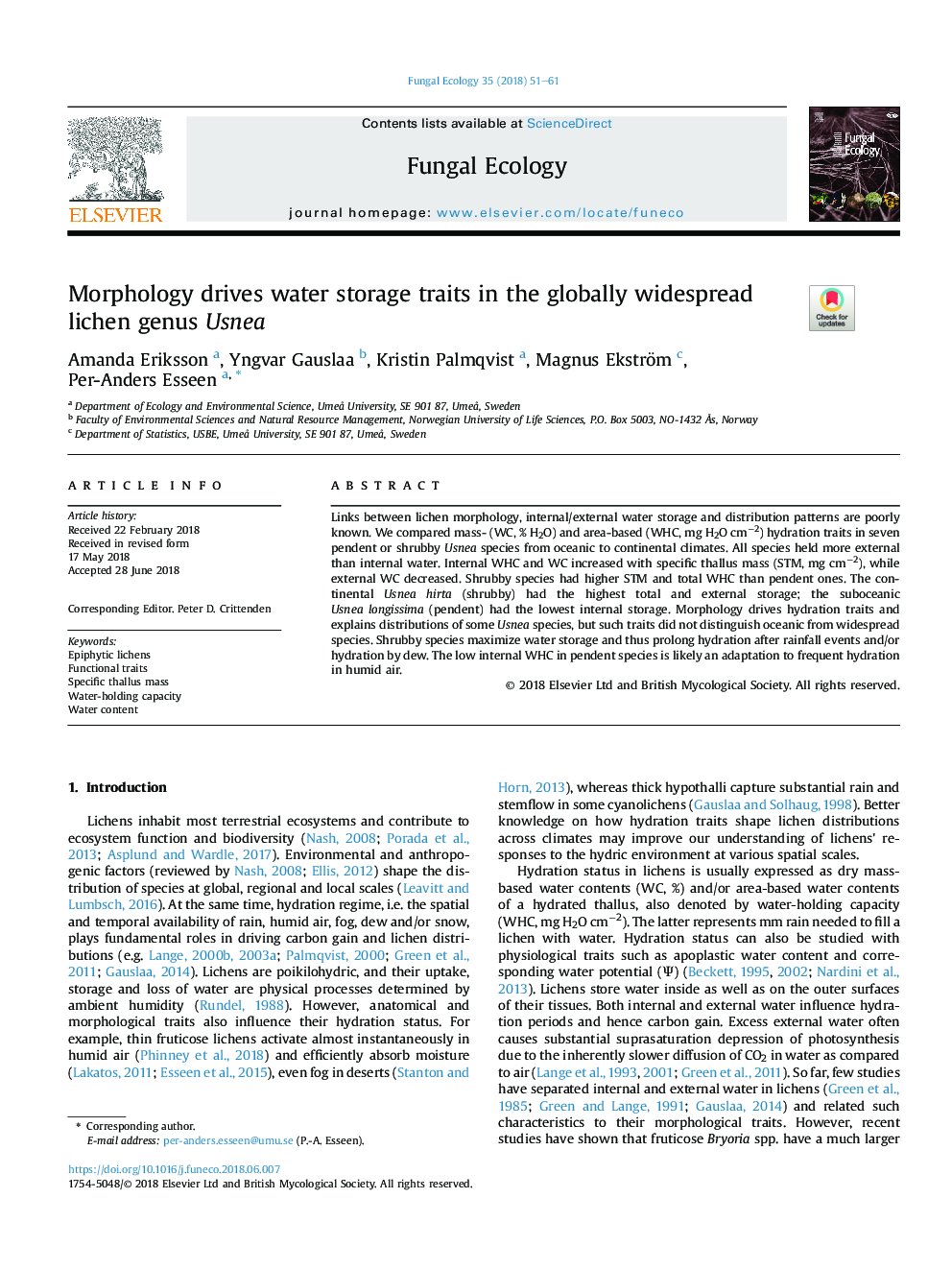| Article ID | Journal | Published Year | Pages | File Type |
|---|---|---|---|---|
| 8384199 | Fungal Ecology | 2018 | 11 Pages |
Abstract
Links between lichen morphology, internal/external water storage and distribution patterns are poorly known. We compared mass- (WC, % H2O) and area-based (WHC, mg H2O cmâ2) hydration traits in seven pendent or shrubby Usnea species from oceanic to continental climates. All species held more external than internal water. Internal WHC and WC increased with specific thallus mass (STM, mg cmâ2), while external WC decreased. Shrubby species had higher STM and total WHC than pendent ones. The continental Usnea hirta (shrubby) had the highest total and external storage; the suboceanic Usnea longissima (pendent) had the lowest internal storage. Morphology drives hydration traits and explains distributions of some Usnea species, but such traits did not distinguish oceanic from widespread species. Shrubby species maximize water storage and thus prolong hydration after rainfall events and/or hydration by dew. The low internal WHC in pendent species is likely an adaptation to frequent hydration in humid air.
Related Topics
Life Sciences
Agricultural and Biological Sciences
Ecology, Evolution, Behavior and Systematics
Authors
Amanda Eriksson, Yngvar Gauslaa, Kristin Palmqvist, Magnus Ekström, Per-Anders Esseen,
